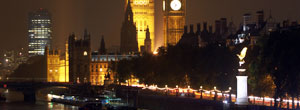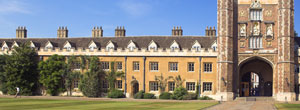Despite the government’s efforts to shore up traditionalism and to retribalize them, black people became more fully integrated into the urban and industrial society of 20th-century South Africa than happened elsewhere on the continent. An educated elite of clerics, teachers, business people, journalists and professionals grew to be a major force in black politics.
Mission Christianity and its associated educational institutions exerted a profound influence on African political life, and separatist churches were early vehicles for African political assertion. The experiences of studying abroad and in particular interaction with black people struggling for their rights elsewhere in Africa, in the United States and the Caribbean, also played an important part. A vigorous black press, associated in its early years with such pioneer editors as JT Jabavu, Pixley Seme, Dr Abdullah Abdurahman, Sol Plaatje and John Dube, served the black reading public.
At the same time, African communal struggles to maintain access to the land in rural areas posed a powerful challenge to the white State.
Traditional authorities often led popular struggles against intrusive and manipulative policies. Government attempts to control and co-opt the chiefs often failed.
Steps towards the formation of a national political organisation of ‘coloureds’ began around the turn of the century with the formation of the African Political Organisation (APO) in 1902 by Dr Abdurahman in mainly the Cape Province. The African National Congress (ANC), founded in 1912, became, however, the most important black organization drawing together traditional authorities and the educated African elite in common causes.
In its early years, the ANC was concerned mainly with constitutional protest. Worker militancy emerged in the wake of the First World War, and continued through the 1920s.
It included strikes and an anti-pass campaign given impetus by women, in particular in the Free State, resisting extension of the pass laws to them. The Industrial and Commercial Workers’ Union, under the leadership of Clements Kadalie, was (despite its name) the first populist, nation wide organization representing blacks in rural as well as urban areas. But it was short-lived.
The Communist Party, formed in 1921 and since then a force for both non-racialism and worker organisation, was to prove far longer-lasting.
In other sections of the black population too, the turn of the century saw organized opposition emerging. Gandhi’s leadership of protest against discriminatory laws gave impetus to the formation of provincial Indian congresses.
The principles of segregationist thinking were laid down in a 1905 report by the South African Native Affairs Commission, and continued to evolve in response to these economic, social and political pressures. In keeping with its recommendations, the first Union government enacted the seminal Natives Land Act in 1913. This defined the remnants of their ancestral lands after conquest for African occupation, and declared illegal all land purchases or rent tenancy outside these reserves.
The reserves (‘homelands’ as they were subsequently called) eventually comprised about 13% of South Africa’s land surface. Administrative and legal dualism reinforced the division between white citizen and black non-citizen, a dispensation personified by the Governor-General who, as ‘Supreme Chief’ over the country’s African majority, was empowered to rule them by administrative fiat and decree.
The government also regularized the job color bar, reserving skilled work for whites and denying African workers the right to organize.
Legislation, which was consolidated in the Natives (Urban Areas) Act, 1923, entrenched urban segregation and controlled African mobility by means of pass laws. The pass laws were intended to enmesh Africans in a web of coercion designed to force them into labor and to keep them there under conditions and at wage levels that suited white employers, and to deny them any bargaining power.
In these and other ways, the foundations of apartheid were laid by successive governments representing the compromises hammered out by the National Convention of 1908 1909 to effect the union of English and Afrikaans-speaking whites.
Divisions within the white community remained significant, however. Afrikaner nationalism grew as a factor in the years after union.
It was given impetus in 1914 both by the formation of the National Party (NP), in a breakaway from the ruling South African Party, and by a rebellion of Afrikaners who could not reconcile themselves with the decision to join the First World War against Germany. In part, the NP spoke for Afrikaners impoverished by the Anglo-Boer/South African War and dislodged from the land by the development of capitalist farming.
An Afrikaner underclass was emerging in the towns, which found itself uncompetitive in the labor market as white workers demanded higher wages than those paid to blacks.
Soon, labor issues came to the fore. In 1920, some 71,000 black mineworkers went on strike in protest against the spiraling cost of living, but the strike was quickly put down by isolating the compounds where the migrant workers were housed.
Another threat to government came from white workers. Immigrant white workers with mining experience abroad performed much of the skilled and semi-skilled work on the mines. As mine-owners tried to cut costs by using lower-wage black labor in semi-skilled jobs, white labor became increasingly militant. These tensions culminated in a bloody and dramatic rebellion on the gold-fields in 1922, which the Smuts government put down with military force. In 1924, a Pact government under Hertzog, comprising Afrikaner nationalists and representatives of immigrant labor, ousted the Smuts regime.
The Pact was based on a common suspicion of the dominance of mining capital, and a determination to protect the interests of white labor by intensifying discrimination against blacks. The commitment to white-labor policies in government employment such as the railways and postal service was intensified, and the job color bar was reinforced with one of its main objectives to address what was known as a ‘poor white problem’.
In 1934, the main white parties fused to combat the local effects of a world-wide depression. This was followed by a new Afrikaner nationalist breakaway under Dr DF Malan.
In 1936, white supremacy was further entrenched by the United Party with the removal from the common voters’ roll of the Africans of the Cape Province who qualified. Meanwhile Malan’s breakaway NP was greatly augmented by an Afrikaner cultural revival spearheaded by the secret white male Afrikaner Broederbond and other cultural organizations during the year of the Voortrekker Centenary Celebrations (1938) as well as anti-war sentiment from 1939.
Gerald Crawford was born in South Africa, studied electronics, telecommunication, eco-travel and african travel concepts. He taught responsible tourism in South Africa. Website Address: http://www.12234455.co.za

